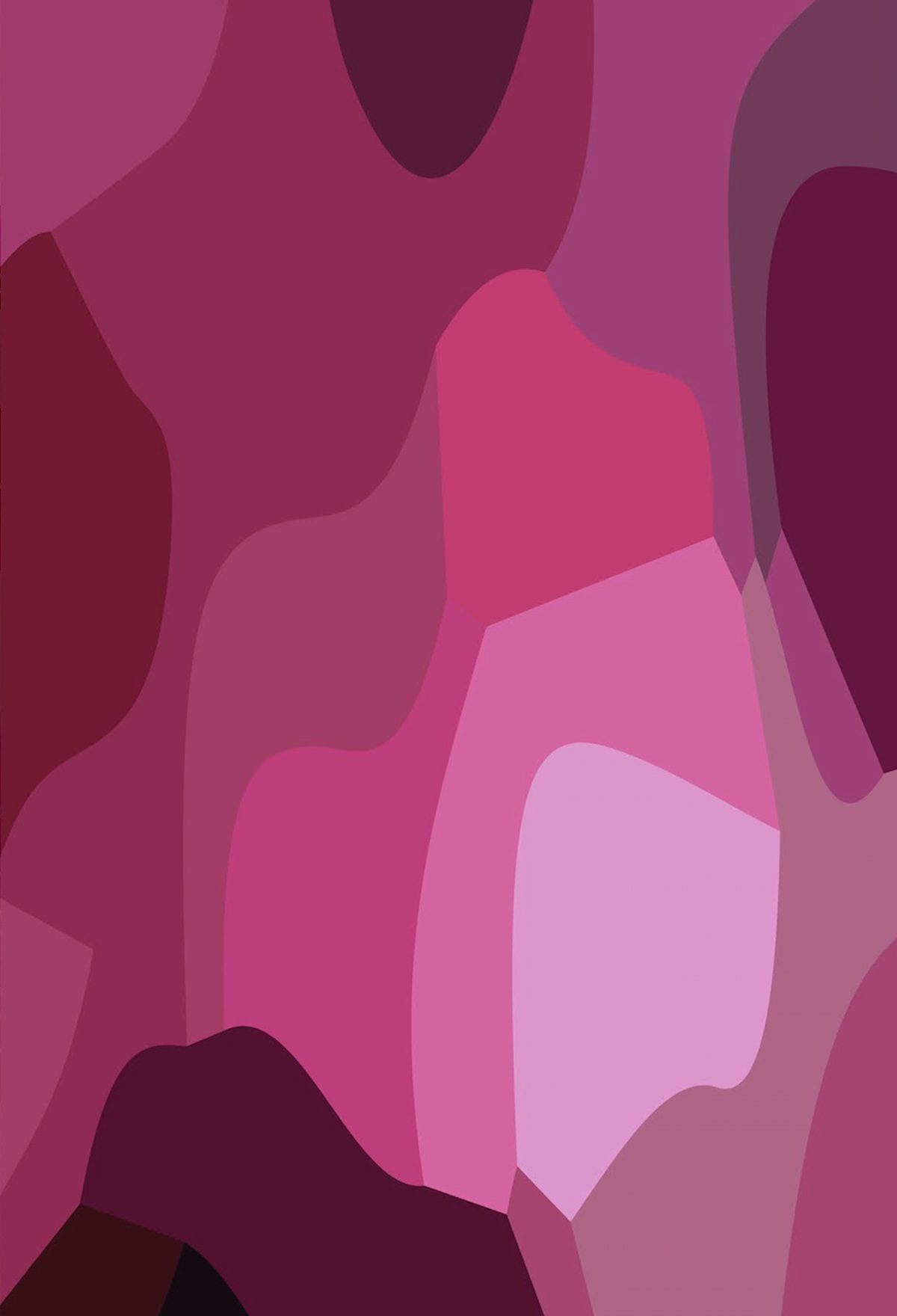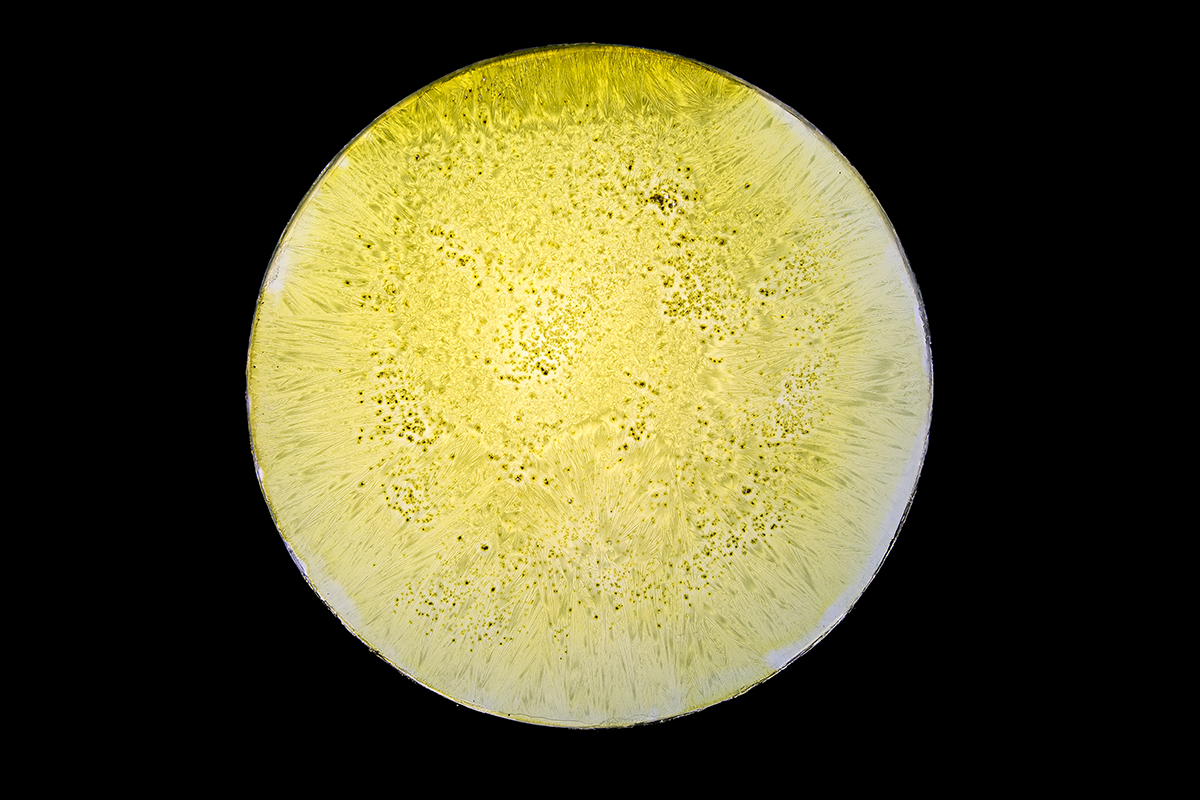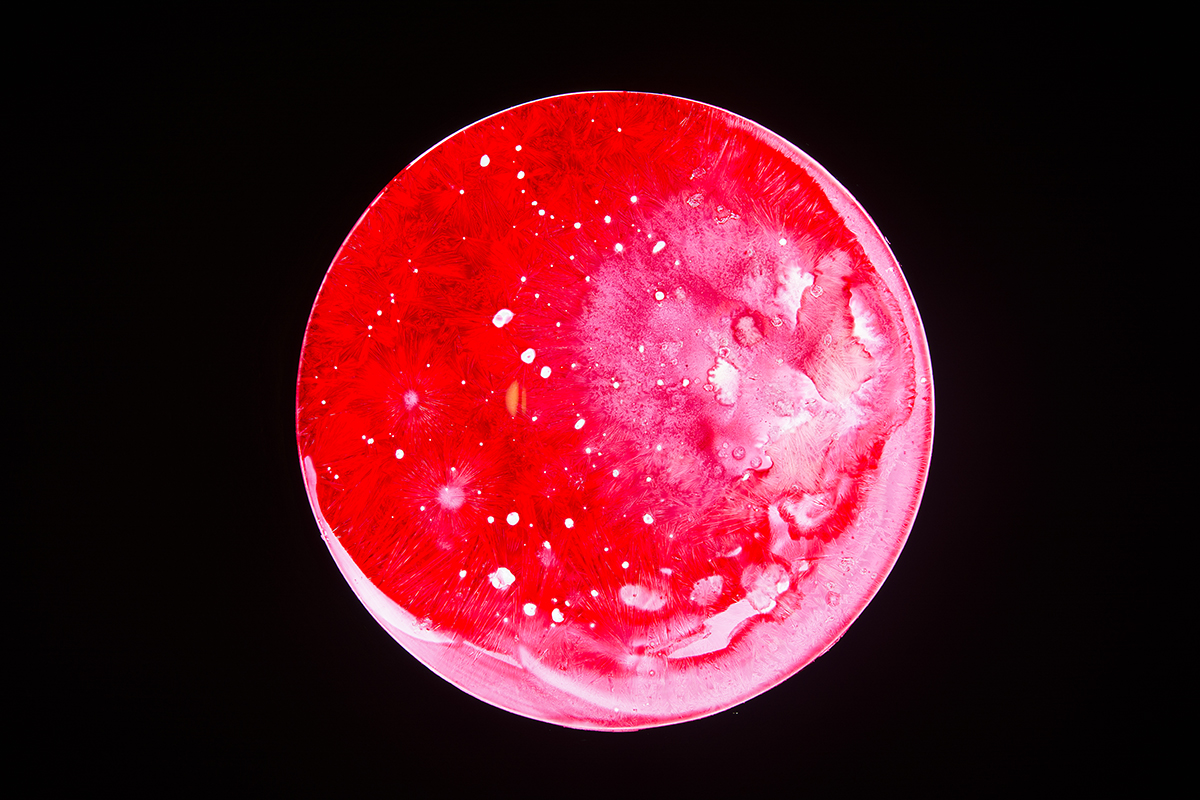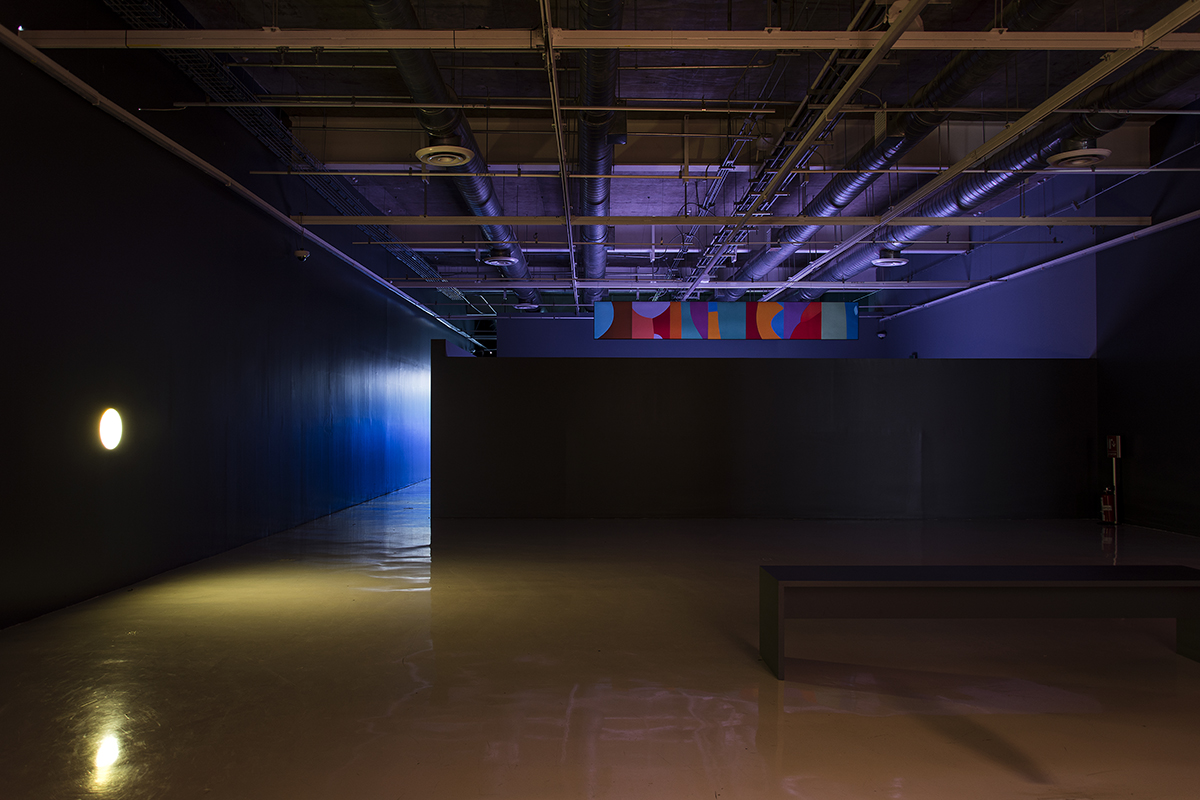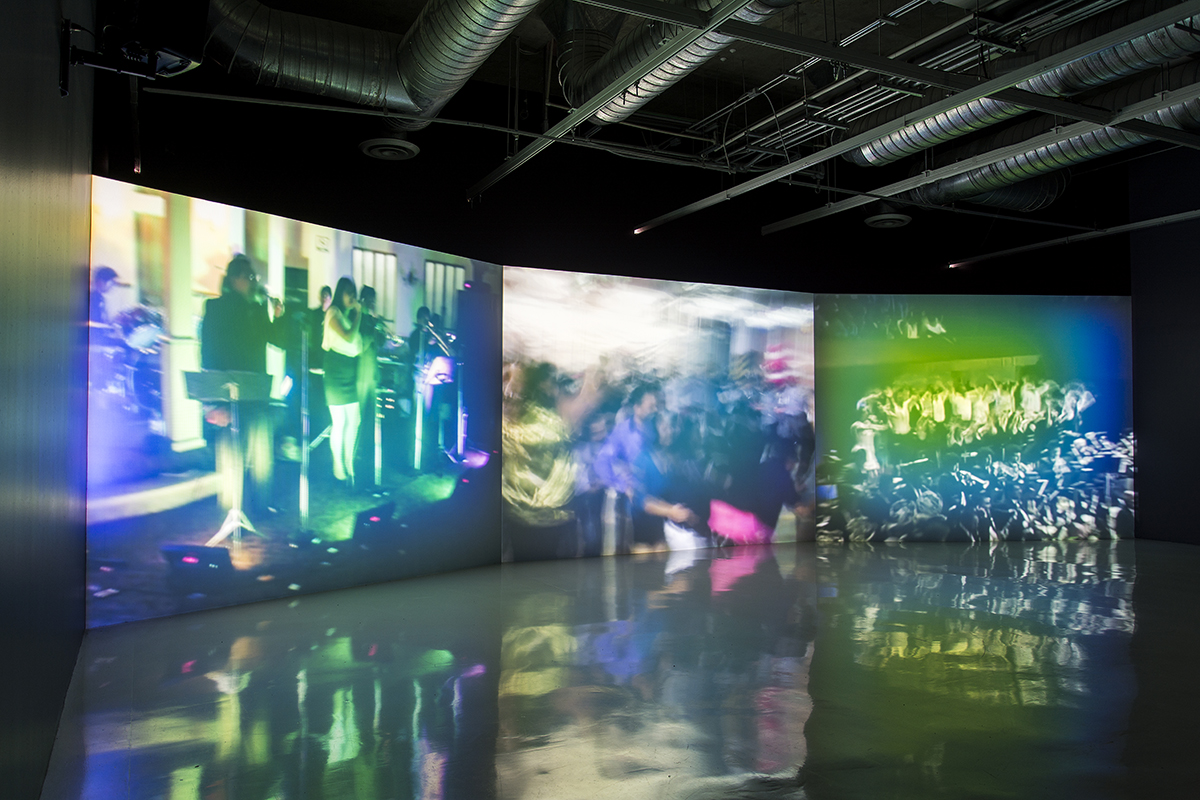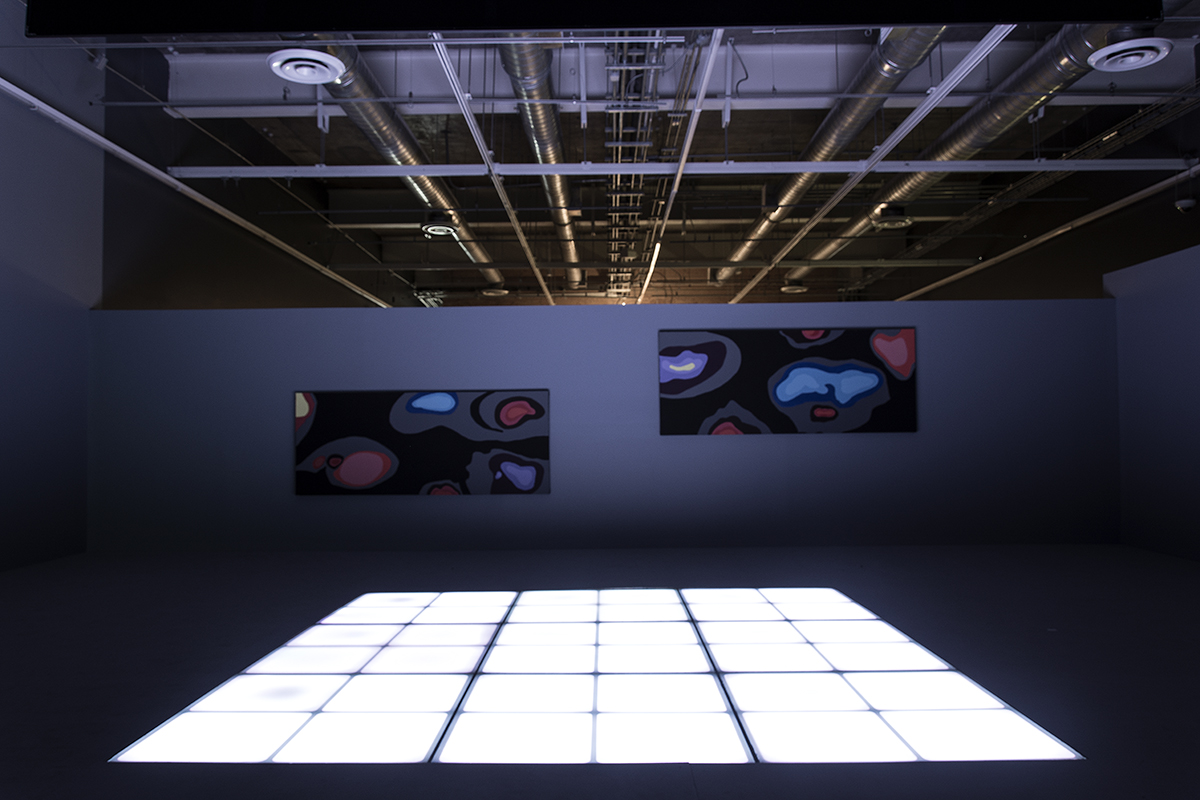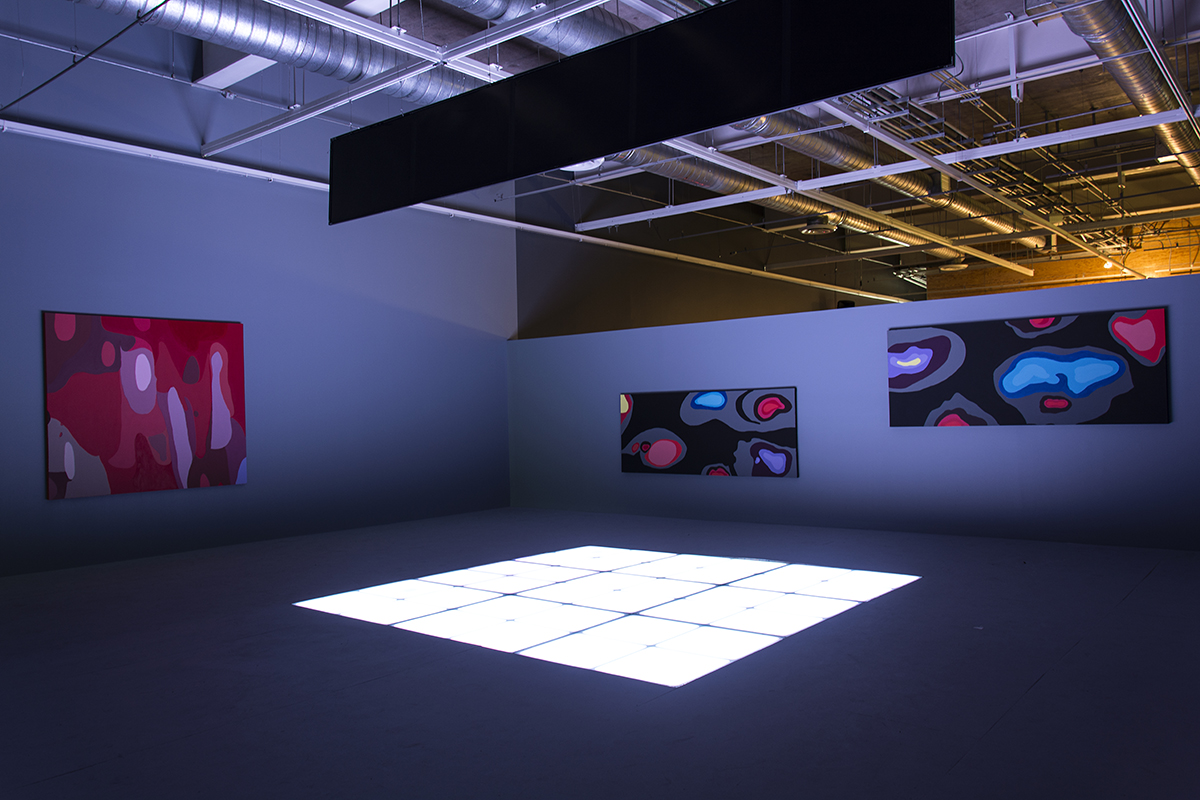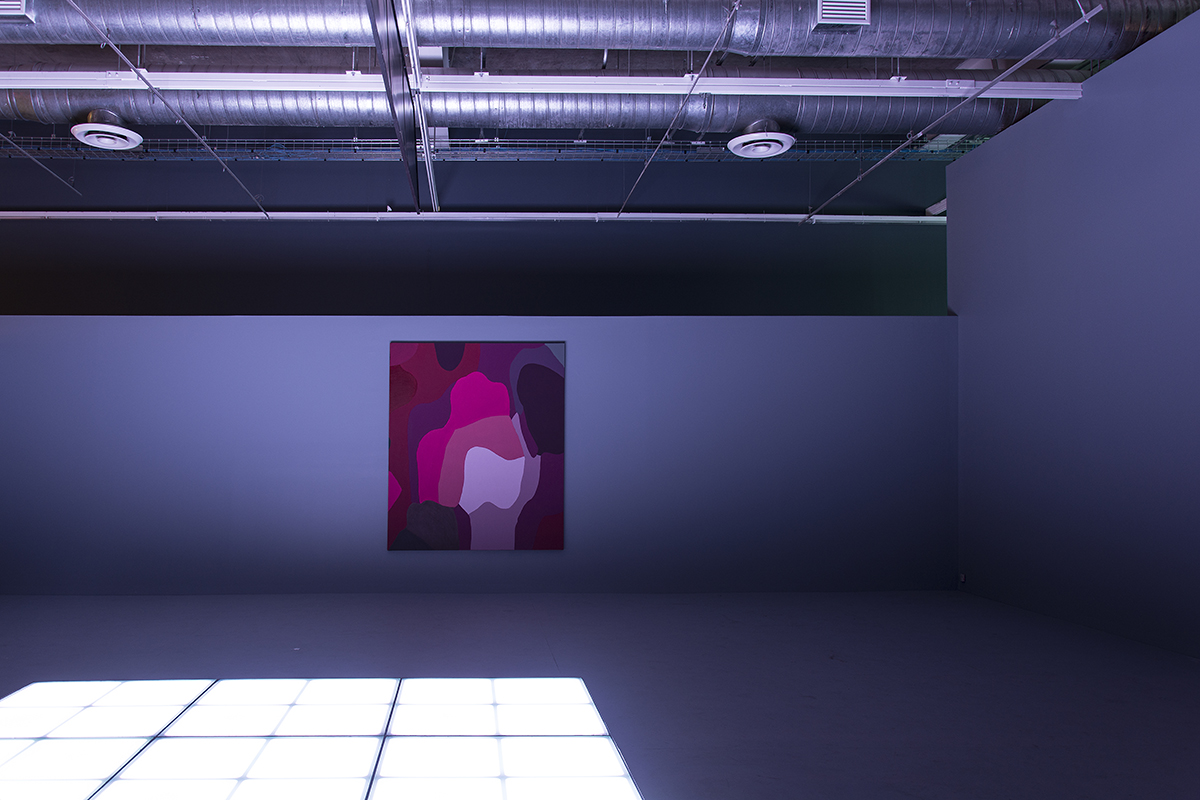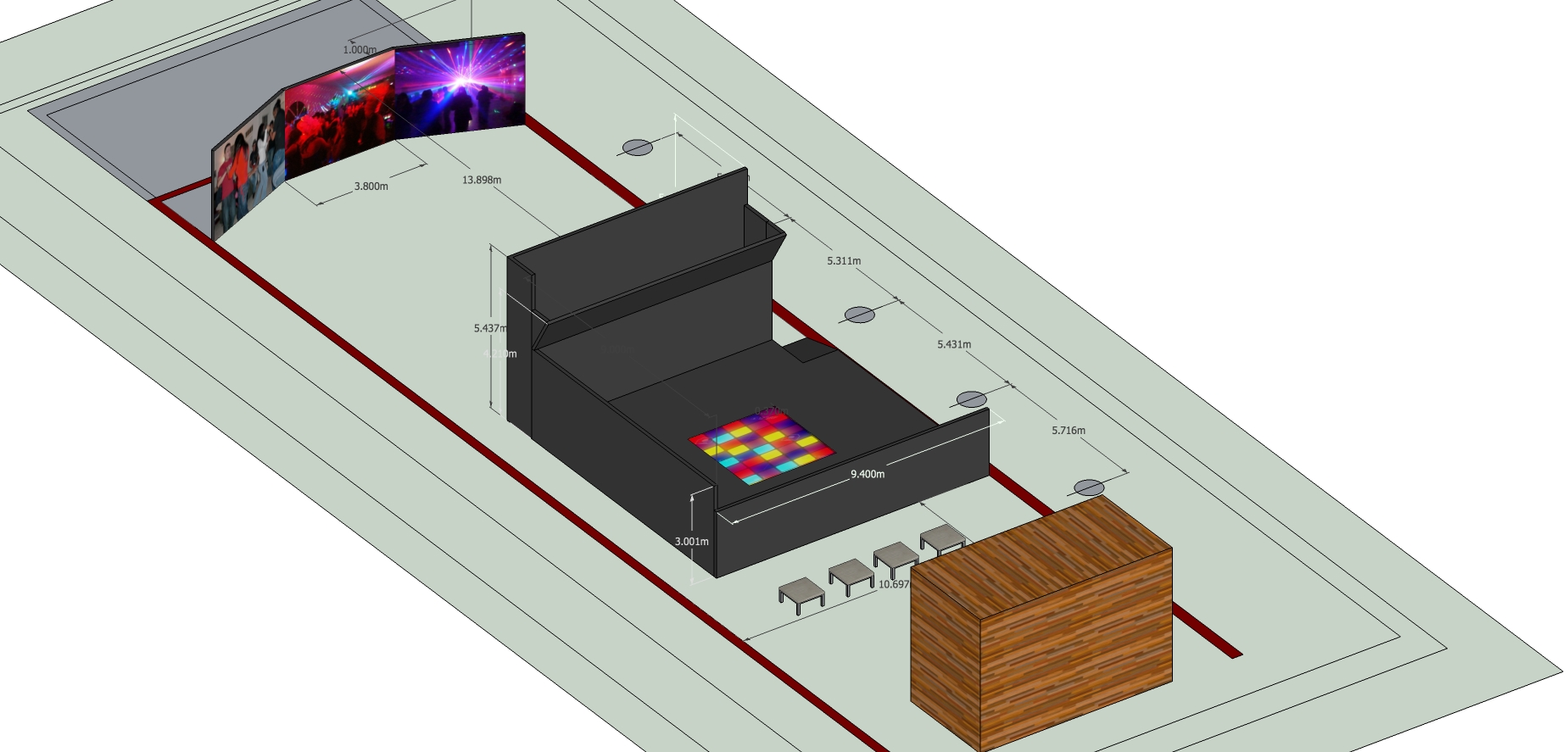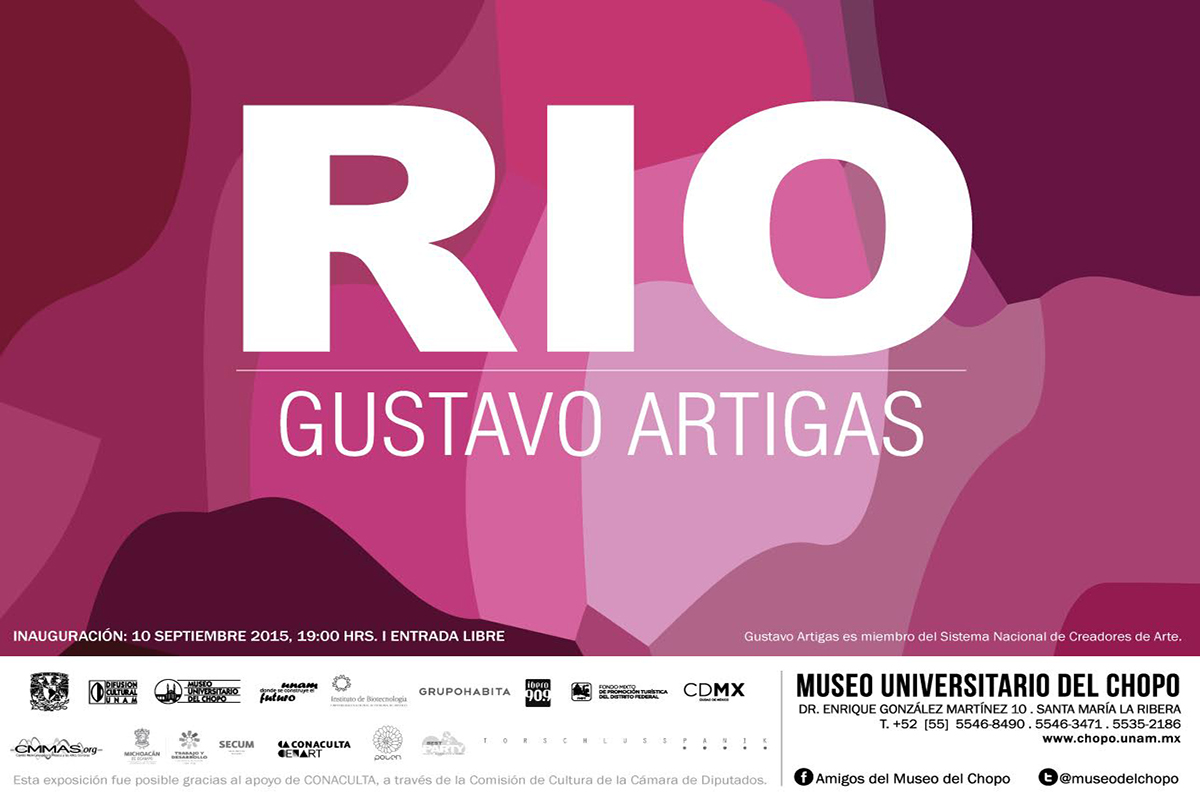GUSTAVO ARTIGAS
info@gustavoartigas.com
RIO
Museography Essay. Museo del Chopo. Mexico City. 2015
RIO is a project by Gustavo Artigas which includes stained glass, sound, video, photography, graphic work, painting, and lighting pieces, and integrates several topics that have been constant throughout his production during the last 15 years: an interest in the study of color, the analysis of the toxicity of certain materials, as well as the articulation of situations.
In the apparent manner of an installation, this project or museographic essay proposes a tour along the space of the gallery. An experience associated to the notion of relajo (roughly translated as “dissipation”) is tried to be alluded when walking through it. In RIO, Artigas reconsiders such behavior keeping the book by Jorge Portilla La fenomenología del relajo (Phenomenology of relajo) (1966) in mind. For this author, member of the Hiperión group, such “sense of behavior” makes it possible for the individual not to commit to something that is “actually serious and, less than anything, to his/her own abilities and destiny”. In other words, relajo operates as a dissemination of commitment. Artigas has chosen a Eurodisco hit from the 70´s, by the Belgian band Two Man Sound, with the purpose of appreciating this behavior from a different perspective. Such theme song (which evokes the tropical, the carnival, and, mainly, Brazil) operates as a catalyst for party, relajo, and “desmadre” (very nearly translated as “wild party”). The impact of this song nonetheless is profoundly local: in the rest of the world –including Brazil- it is largely unknown. In Mexico, however, it is easily recognizable and invites people to dance, to join the relajo. With respect to the ideas of Portilla, RIO points in the opposite direction by showing a sense of cohesion and strange fraternity underlying such “sense of behavior”.
The dance floor is the place par excellence where this sense of cohesion is experimented. The dance floor is also an element included in RIO. With the purpose of articulating this space, Artigas has made several lithographs and paintings with abstract shapes that have clearly defined color zones which can be related to a plastic solution that was common in the 70´s –decade in which the lighting dance floors also appeared. In this environment, light interacts with the colors of the works, causing their constant transformation. Although they may easily be related to some paintings from the 70´s, the designs of these pieces come from color patterns in nature; especially from the skin of venomous batrachians from the tropics.
During the exhibition period of RIO, Artigas will carry out numerous actions and projects among which Malos pasos is found, a series of photographs that will gradually be installed in the gallery.
Daniel Garza Usabiaga @danielgarzausabiaga
Acknowledgements:
Muna Cann, Camilo, and Cloe Artigas. Fernanda Díaz, Dr, Alejandro Alagón, Aldo del Rosario, Roberto Ramírez, Plinio Ávila. Jonatan Velázquez, Tomy Delgado, Cristina Medellín, Emilio Chapela, and all the staff of Museo Universitario del Chopo.
Video documentation
